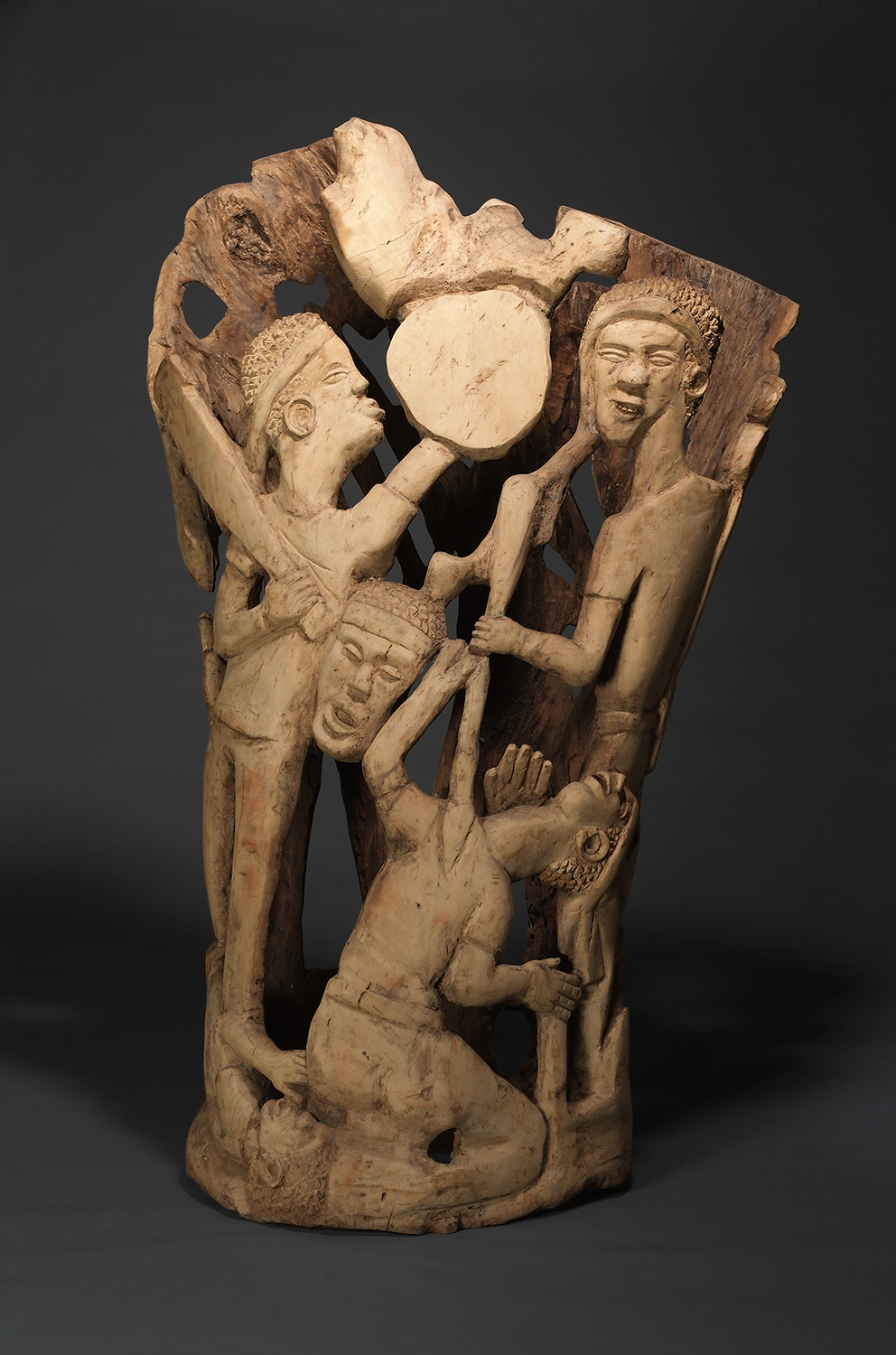Noria MABASA (b. 1938)
BIOGRAPHY
Noria Mabasa is a celebrated South African sculptor known for her evocative works in clay and wood, deeply rooted in Venda culture and her personal spiritual journey. She is a custodian of indigenous knowledge and a respected teacher who willingly shares her knowledge and skills.
Born in Shigalo Village, Limpopo, she is largely self-taught and began her artistic journey in the late 1970s, after experiencing vivid dreams that she experienced as messages from her ancestors. Her first works were clay figurines inspired by her surrounding material world – mostly portrayals of people: bureaucrats, policemen, military personnel; a reflection of the changing society in what was then the newly ‘independent’ Venda homeland.
Mabasa’s career took a transformative turn in the 1980s when she ventured into wood carving – a medium traditionally dominated by men. Her decision to work with wood was both ground-breaking and subversive, challenging gender norms within her community. Her wooden pieces are sculptural renderings of dreams that combine traditional folklore with personal experience. Mabasa incorporates a blend of mythological elements and real-life experiences in her sculptures, as seen in her recurring crocodile motifs, which stem from personal encounters and folklore.
Her works have been featured in major exhibitions, including the landmark exhibition Tributaries (1985), which sought to integrate underrepresented Black artists into the South African art cannon. This exposure established her as a significant figure in South African art, although critical responses often oversimplified her practice by framing it through Eurocentric or romanticised perspectives. Despite these challenges, Mabasa has remained a central figure. Her works are part of esteemed collections, including the South African Constitutional Court Art Collection.
Her work was featured as part of When Rain Clouds Gather: Black Women Artists, 1940–2000 at Norval Foundation in Cape Town, which reflected on the influential and often unacknowledged contributions of Black women to South African art history in the twentieth century. Curated by Nontobeko Ntombela and Portia Malatjie, the exhibition was ‘a cross-generational communion of 40 Black women artists, spanning from early Modernism to the contemporary period’.
In her eighties, Mabasa remains active, with projects such as her Shaping Dreams exhibition (2022) at the Villa-Legodi Centre for Sculpture reaffirming her enduring influence. This exhibition was the culmination of a larger project which began earlier that year, when Mabasa began making new work in residence at NIROX. Her residency was accompanied by a series of workshops with learners of different ages, and an exhibition in the Residency Studio of 38 pre-existing works in clay and wood, produced between 2004 and 2022.
Mabasa has also mentored young artists through the Vhutsila Arts and Craft Centre, which she founded to preserve and promote Venda culture.
She was a recipient of the 2002 Silver category of the Order of the Baobab.


